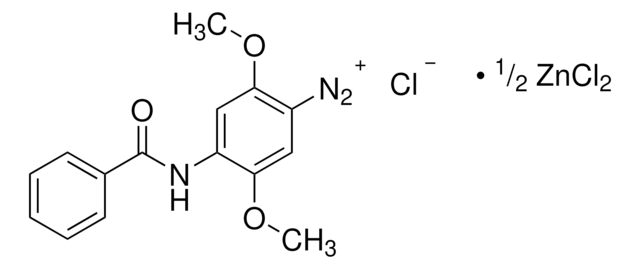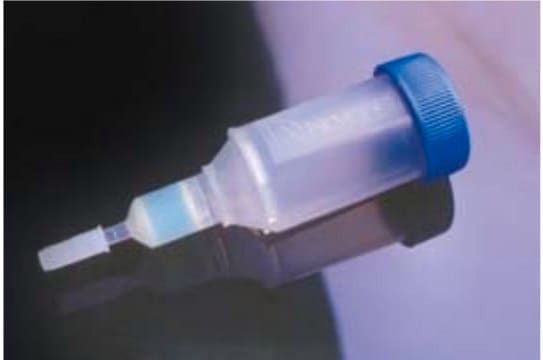H8162
HIS-Select® Cobalt Affinity Gel
(1:1 suspension in a 30% ethanol solution)
Synonym(s):
cobalt affinity gel, cobalt charged agarose
About This Item
Recommended Products
form
(1:1 suspension in a 30% ethanol solution)
shelf life
1 yr (when stored properly.)
technique(s)
protein purification: suitable
matrix
6% Beaded Agarose
capacity
>15 mg/mL, agarose binding capacity (protein)(with an approx. 30 kDa protein)
storage temp.
2-8°C
General description
HIS-Select Cobalt Affinity Gel is an immobilized metal-ion affinity chromatography (IMAC) product. The matrix for this affinity gel is 6% beaded agarose. The selectivity can be modulated with the inclusion of imidazole during chromatography. HIS-Select Cobalt Affinity Gel is durable and can capture recombinant proteins with histidine tags at a high flow rate. Recombinant proteins with His tags are bound using native, denaturing, or mild reducing conditions. The capacity of this affinity gel is typically >15 mg/mL of packed gel, determined with a His-tagged protein of molecular mass ~30 kDa.
Application
Physical form
Legal Information
Signal Word
Danger
Hazard Statements
Precautionary Statements
Hazard Classifications
Aquatic Acute 1 - Aquatic Chronic 1 - Carc. 1B - Eye Irrit. 2 - Flam. Liq. 3 - Muta. 2 - Repr. 1B - Resp. Sens. 1 - Skin Sens. 1
WGK
WGK 3
Personal Protective Equipment
Certificates of Analysis (COA)
Search for Certificates of Analysis (COA) by entering the products Lot/Batch Number. Lot and Batch Numbers can be found on a product’s label following the words ‘Lot’ or ‘Batch’.
Already Own This Product?
Find documentation for the products that you have recently purchased in the Document Library.
Related Content
Investigate in vitro protein-protein interactions with pull-down assays, utilizing affinity, GST pull-down, TAP, and co-immunoprecipitation methods.
Our team of scientists has experience in all areas of research including Life Science, Material Science, Chemical Synthesis, Chromatography, Analytical and many others.
Contact Technical Service











